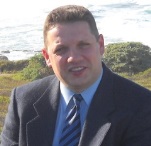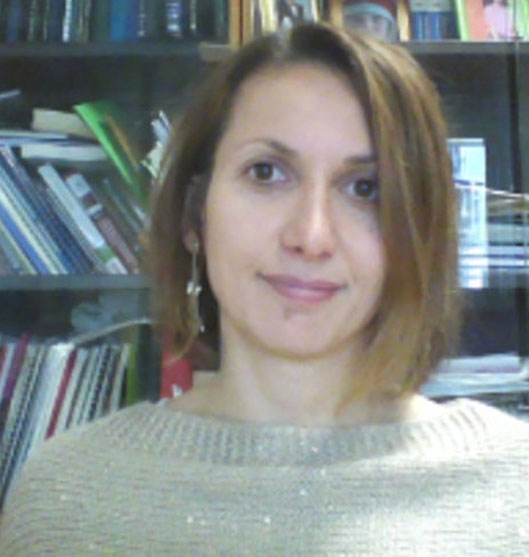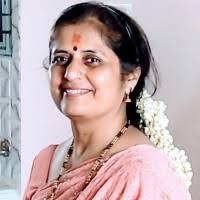Scientific Program
Keynote Session:
Title: On the existing and new potential methods for Partial Discharge source detection
Biography:
Cornel Ioana received the Dipl.-Eng. degree in electrical engineering from the Romanian Military Technical Academy of Bucharest, Romania, in 1999 and the M.S. degree in telecommunication science and the Ph.D. degree in the electrical engineering field, both from University of Brest-France, in 2001 and 2003, respectively. Between 2003 and 2006, he worked as Researcher in ENSTA-Bretagne, Brest, France. Since 2006, he has been an Associate Professor-Researcher with the Grenoble Institute of Technology/GIPSA-lab. His current research activity deals with the signal processing methods adapted to the natural phenomena. His scientific interests are nonstationary signal processing, natural process characterization, underwater systems, distributed sensing and artificial intelligences approaches applied to the surveillance of power systems and natural environments.
Abstract:
Energy transmission and distribution networks face an increase in the number of electrical cables used. In such networks the occurrence of defaults given by the type of used cable, the structure and network capacity, voltage levels, and related environmental conditions is inevitable. The difficulties of predictive maintenance of power grids are related to the large spread of electrical infrastructures and the definition of early warning indicators. Such indicator is the partial discharge activities very informative about the rising insulation problems of electrical materials. The monitoring of such phenomena is nowadays important field in the power transmission and distribution. The purpose of this paper is to study different techniques for the detection transient signals in the context of monitoring partial discharges in electrical networks. Among the various techniques developed and used for the detection of partial discharges, we will focus here on four classes of methods, encountered in existing products, for two of them, and two new techniques that are based on recent concepts: compressive sensing and phase-diagram-based analysis. The comparative study concerns the evaluation of the probability of detection versus false alarm ratio for real signals generated in a reduced scale experimental facility described in the next figure. That is, thanks to this experimental facility typical for real life configurations, we are able to add to the partial discharge signals perturbations such as load signals, reflexions but also the effect of propagation effects in a real electrical cable.
Title: Paper-based biosensors: When paper becomes a huge resource in electrochemistry
Biography:
Fabiana Arduini is Associate Professor of Analytical Chemistry at Department of Chemical Science and Technologies of Tor Vergata University The research interests include the development of Bioassay and Biosensor systems, Electrochemical (bio)sensors, Electrochemical Mediators, Screen-Printed Electrodes (how to use, fabricate and modify them), Sensors and Biosensors modified with Nanomaterials (carbon black, carbon nanotubes, gold nanoparticles, etc.), Paper based (bio)sensors. Real applications in the field of clinical, food and environmental analytical chemistry. The research activity carried out was published in more than 100 papers in ISI peer-reviewed journals, among them with high impact factor in the analytical chemistry journal (e.g. Biosensor and Bioelectronics IF 10.257).
Abstract:
The paper-based colorimetric assays have been widely reported in literature being cost-effective, not requiring additional components (i.e. pump) for microfluidic handling of the solution, and avoiding the sample treatment thanks to the filtering property of the paper. In the last decade, the electroanalysis has discovered the utility of using paper as electrode-active support, converging the reported advantages of paper with the features of electroanalysis such the high sensitivity, selectivity, and the capability to work in complex matrices (e.g. coloured samples).
Here in, we described the research activity carried out in the last 5 years at Nanobiosensing Lab and SENSE4MED at the Department of Chemical Science and Technologies of Tor Vergata University aimed to develop sustainable and cost-effective (bio)sensors for application in environmental, agrifood, security, and biomedical fields.
Title: Bio-derived nanostructured carbon-based materials for electrochemical sensor applications
Biography:
Sushma Dave is associate Professor,Head of Department of Applied sciences and Chief Mentor at Jodhpur Institute of Engineering and Technology, Mogra, Jodhpur (RJ), India.
Abstract:
Biomass derived carbon material can act as an exclusive host template for newer electrodes which can enhance the performance of sensors. A cost effective viable production of strong, portable, sensitive and selective electrochemical sensing devices are the need of the hour for a biosensor and point of care device. It is carried out easily by bio-derived carbon structures that are synthesized by uncomplicated steps, from low-cost abundantly available renewable biomass. Depending on the properties of these new materials they can be integrated with the devices, various detection technologies can be used, where optical and electrochemical detection are the most popular. The technique is used to improve the surface properties so as to increase the electro-analytical behavior of working electrodes. This chapter includes the development of bio-based carbon materials and their application in electrochemical analysis.
Title: Colorimetric label-free Nano sensor for improved sensitive lead detection in water utilizing unmodified AuNP: Insight into rational design of Pb2+zyme
Biography:
Abdul Ghaffar Memon is Tsinghua University graduate, He earned doctoral degree as Ph.D. in the Environmental Science and Engineering from the School of Environment. Upon his excellence in academics Dr. Memon was awarded as outstanding Ph.D. graduate of year 2019. Dr. Memon contributed in the scientific community through his novel research which is acknowledged and published in high-quality Journals including Journal of Hazardous Materials, ACS Applied Interfaces, Sensors Actuators, B Chem, Biosensors, Frontiers of Environmental Science and Engineering etc. Dr. Memon remained active participant in international conferences, His research was acknowledged with best posters awards. Dr. Memon is recipient of Tsinghua-Veolia top grade scholarship, Chinese government Scholarship, Tsinghua University research grant to participate at international meetings overseas. Dr. Memon participated and represented at various forums including United Nations programs, MCCCOP-I, MCCCOP-II, UNCCD, Belt and Road Initiatives, He remained International Students Ambassador, public speaker, associated with various organizations including TEDxTHU. He is member of American Society for Microbiology (ASM), Pakistan Society for Microbiology (PSM), Biological Safety Association of Pakistan (BSAP), Biosensors Biochip and Nanobiology (BBN), Tsinghua University Student association of Belt and Road Initiative (SABRI), Currently Dr. Memon is serving at NED University of Engineering and Technology as Assistant Professor and contributing in teaching and research at graduate and post graduate level.
Abstract:
Water pollution accidents caused by the lead contamination, such as Flint water crisis in the United States, strongly pushed the public to concern the safety of the drinking water distribution system. As a prerequisite, the routine monitoring of lead in water is highly required and demands for an efficient, sensitive, cost-effective, and reliable lead detection methods. This study reports a label-free colorimetric nanosensor using unmodified gold nanoparticles (AuNPs) as indicators to enable rapid and ultrasensitive detection of lead in environmental water. The 8-17 DNAzyme was truncated in this study to facilitate the detachment of ssDNA fragments after the substrate cleavage upon Pb2+ presence. The detached fragments got adsorbed over AuNPs and protected their aggregation against induced salt concentration. As expected, more Pb2+ would result in a stronger color change from blue to pink. The established sensing principle achieved a sensitive limit of detection (LOD) of Pb2+ as 0.2 nM with a linear working range of two orders of magnitude from 0.5 nM to 5.0 nM. The selectivity of nanosensor was demonstrated by evaluating against interfering metal ions. The developed nanosensor can serve as a substitute for rapid analysis and monitoring trace lead levels under the drinking water distribution system and even other environmental water samples.
Oral Session 1:
- Bio sensors
Title: The Microfluidic Lab-on-a-Disc Platform – An Efficient Environment Supporting Rapid Application Development for Decentralised Testing of Biosamples
Biography:
Jens Ducree holds a Full Professorship of Microsystems in the School of Physical Sciences at Dublin City University (DCU), Ireland. He is the founding director of Ireland’s first Fraunhofer Project Centre for Embedded Bioanalytical Systems at DCU (FPC@DCU) – a joint initiative of Science Foundation Ireland and Fraunhofer-Gesellschaft. He is also academic member of the National Centre for Sensor Research (NCSR) and the 3U Joint Institute of Global Health (JIGH), and a principal investigator for Microfluidic Platforms at the Biomedical Diagnostics Institute (BDI) since 2008.
Abstract:
The successful commercialisation of microfluidics-enabled solutions in the context of the life sciences is typically led by significant techno-economical challenges on performance, reliability and cost of development and manufacture. With the example of the centrifugal microfluidic “Lab-on-a-Disc” technology, this paper outlines a platform-based approach for expediting and de-risking the route from proof-of-concepts to high technology readiness levels as adopted from mature industries. Rather than starting from scratch, new applications are flexibly configured from a geometrically parametrised design library of Laboratory Unit Operations, e.g. for particle separation, metering and mixing, that are interconnected by flow control elements such as valves for comprehensive sample-to-answer automation of common (bio-)assay protocols, e.g. for small molecules, proteins / antibodies, nucleic acids and bioparticles such as cells. The development kit encompasses experimental and simulation tools to validate functional robustness, guidelines for design and scale-up of manufacture, and standard procedures for system- and component-level characterisation. The modular strategy also offers opportunity towards accelerating regulatory processes and for coordinating industrial supply chains.
Title: Reproducing our Fingertip Sensation by Super High Resolution Tactile Sensing
Biography:
Hidekuni Takao, received his BS in 1993, MS in 1995 and Ph.D. degree in 1998 all from Toyohashi University of Technology, Japan. After he worked as a research fellow (PD) with JSPS, Japan in 1998, he joined faculty of Toyohashi University of Technology in 1999 as assistant professor, and was promoted to associate professor in 2005. He moved to Kagawa University, Japan in 2009, where he has served as a full professor since 2014. He is also holding the position of director of Nano-Micro Structure Device Integrated Research Center in the same University. His research interests are high performance silicon MEMS sensors and systems and their applications to fine tactile sensing technology. Since 2015, he has been the representative of JST-CREST project on “nano-tactile sensing”. He acted as a technical committee member of IEEE MEMS 2012 Paris, 2013 Taipei, 2017 Las Vegass, and 2018 Belfast.
Abstract:
We, human has very sophisticated sense of touch on our fingertip skin. We can recognize and distinguish various and delicate difference of touch feelings obtained by sweep motion of fingertip on various kinds of materials and objects. Fingertip skin has the highest density of force and vibration receptors (Meissner’s Corpuscles and Merkel Cells) under the surface skin where fine pitch patterns of fingerprint are formed on. Human’s fingertip has a very high spatial resolution below 100µm and can recognize existence of 13nm-pitch patterns as reported recently.
In order to reproduce artificial sense of touch like human's fingertip, very high performances on spatial resolution and sensitivity are required to tactile sensors. In this talk, silicon based MEMS tactile sensors with a ultra-high force and spatial resolutions are introduced and demonstrated. All the mechanical structures in the tactile sensor deice are made from “pure” single crystal silicon layer of SOI wafers. No elastomer/polymer structures are used in the sensing structure. The contactor parts of the tactile sensor have curved shape which is very similar to the cross-section of a fingerprint, and its suspension springs are designed similarly to a spring constant of human’s fingertip skin surface. In the latest version of our tactile sensors, six contactors with fingerprint-like shape are integrated at a pitch of 500µm to get high spatial resolution tactile images. Each fingerprint-like contactor reproduces vertical motion (by micro roughness) and horizontal motion (by frictional force) of a fingerprint closely under sweeping motion of fingertip in measurement. Spatial resolution of our tactile sensor reaches to sub-micron region, and its force resolution of friction is below 50µN. These performances are enough high to analyze surface touch feelings of “Hair surface condition”, “Skin condition”, and “Touch feeling of various papers and clothes” like human fingertip. Machine learning based on deep neural network has been applied to the signal from the high resolution tactile sensors. As a result, 10 kinds of “cloth” samples have been discriminated at a correct percentage of 99% successfully. Combination of high resolution tactile sensor and deep neural network is a strong approach to reproduce human fingertip sensation by state-of-the-art device electron device technology.
Oral Session 2:
- Video Presentation
A PHP Error was encountered
Severity: 8192
Message: trim(): Passing null to parameter #1 ($string) of type string is deprecated
Filename: pastconference/past-program-schedule.php
Line Number: 354
Backtrace:
File: /efsdata/meetingsint-com/application/views/pastconference/past-program-schedule.php
Line: 354
Function: trim
File: /efsdata/meetingsint-com/application/controllers/Pastconference.php
Line: 128
Function: view
File: /efsdata/meetingsint-com/index.php
Line: 317
Function: require_once
Title: Method to prevent early and late relapses in breast cancer; possible collaboration with Sensors
Biography:
Michael Retsky received PhD in experimental physics from University of Chicago in 1974. While working at Hewlett-Packard in Colorado Springs in 1982, a friend started an informal cancer research project since his wife was being treated for cancer. Over the next years, Retsky made a career change into cancer research. His first paper in oncology (Speer et al Cancer Research 1984) predicted that tumor growth included periods of dormancy. He eventually became Prof of Biology at Univ of Colorado and later on staff of Judah Folkman at Harvard Medical School.
Retsky was diagnosed with Stage IIIc colon cancer in 1994. Based on his knowledge of tumor kinetics he used low-dose, long-term chemotherapy instead of maximum tolerated chemotherapy. This became the first use of metronomic chemotherapy.
Abstract:
My colleagues and I were confronted in 1993 with an unexpected bimodal relapse pattern in breast cancer. Data showed that in patients treated only with surgery, 50 to 80% of all relapses occurred in an early sharp wave in the first 3 years post-surgery. We eventually determined that surgery to remove a primary tumor causes systemic inflammation for a week. During that time, dormant single malignant cells and avascular deposits escape from dormancy and appear as relapses within 3 years. The multi-national authors of our reports include medical oncologists, surgeons, anaesthesiologists, physicists, and other scientists. A solution seems to exist based on our analysis. That therapy is the common nonsteroidal anti-inflammatory drug (NSAID) analgesic ketorolac administered as iv at the time of surgery and perhaps orally for a few days after surgery. Three animal models and two retrospective clinical trials support our findings.








